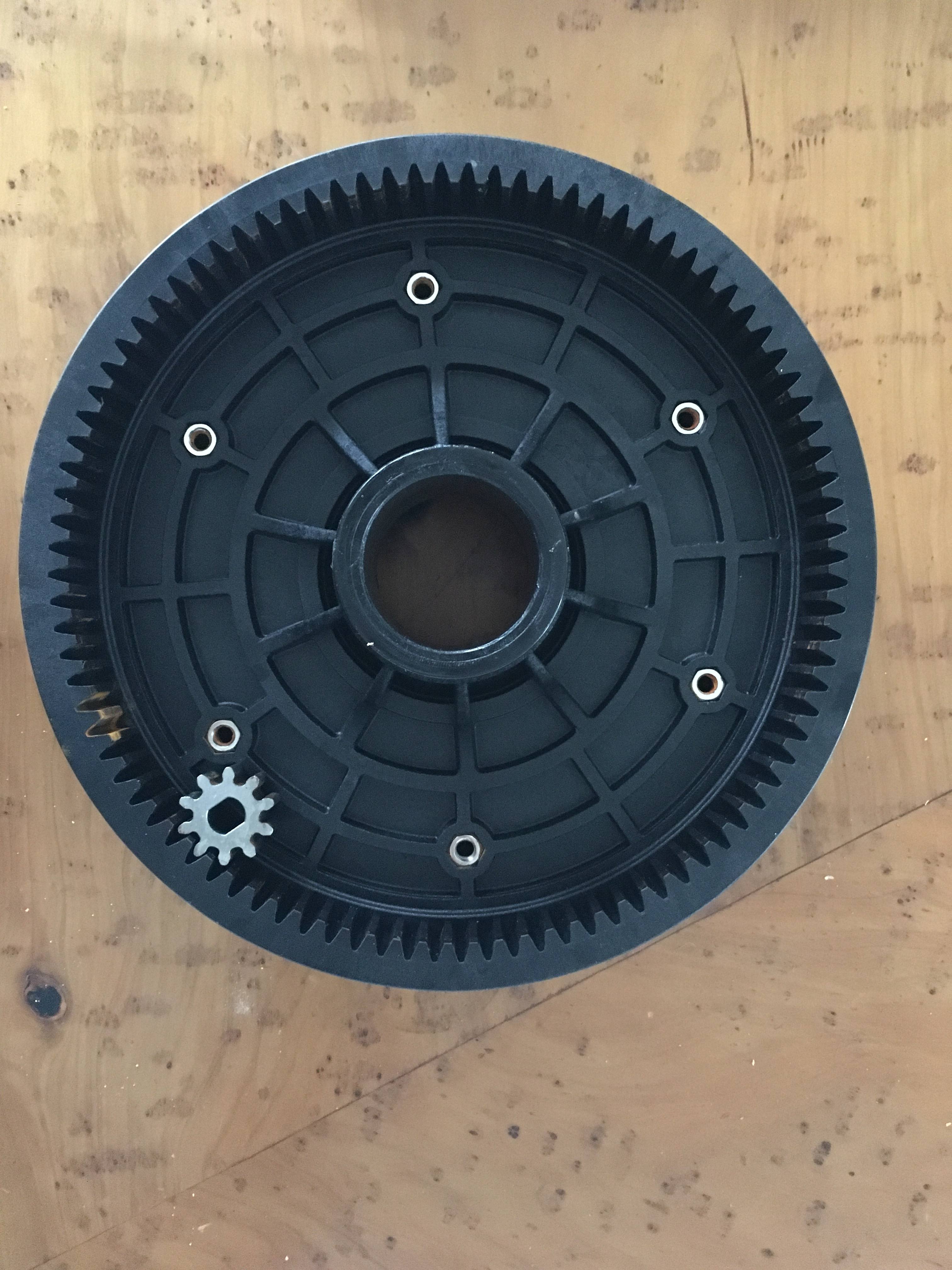I'm trying to re-purpose a garage door opener to use as a pool cover opener. The device has a 24v DC motor that doesn't seem to be too happy pulling the pool cover (it works but stops randomly - I'm assuming because of over-current protection but no indication is given).
I was thinking of replacing the 24v motor with a 48v DC motor (since these are popular with e-scooters and seem cheap). But I need some advice on how best to do this. The existing motor has a two wire connection on the PCB and an earth connection. I assume the 24V on the two wires reverses to switch between winding and unwinding. On the gearing there is a small PCB with a chip and what I imagine is a magnet connected to the spindle and this plugs back in to the main PCB and tells the whole thing when to start and stop - and it's this gearing and rotary feedback device that I want to retain.
So if I can find a 48v motor that can accept the same gearing mechanism what is the best way to drive it from the +/-24v output? Is there a bi-directional relay for switching 48v from a 24v input? Is it unrealistic to consider stepping up the 24v to 48v given that I'm looking for more power? The whole thing does have a grunty coil transformer for 240vAC -> 24vAC... Not sure what current it would be rated to though... is there a way of finding out?
Is there another way of doing this that I haven't considered?
I was thinking of replacing the 24v motor with a 48v DC motor (since these are popular with e-scooters and seem cheap). But I need some advice on how best to do this. The existing motor has a two wire connection on the PCB and an earth connection. I assume the 24V on the two wires reverses to switch between winding and unwinding. On the gearing there is a small PCB with a chip and what I imagine is a magnet connected to the spindle and this plugs back in to the main PCB and tells the whole thing when to start and stop - and it's this gearing and rotary feedback device that I want to retain.
So if I can find a 48v motor that can accept the same gearing mechanism what is the best way to drive it from the +/-24v output? Is there a bi-directional relay for switching 48v from a 24v input? Is it unrealistic to consider stepping up the 24v to 48v given that I'm looking for more power? The whole thing does have a grunty coil transformer for 240vAC -> 24vAC... Not sure what current it would be rated to though... is there a way of finding out?
Is there another way of doing this that I haven't considered?

